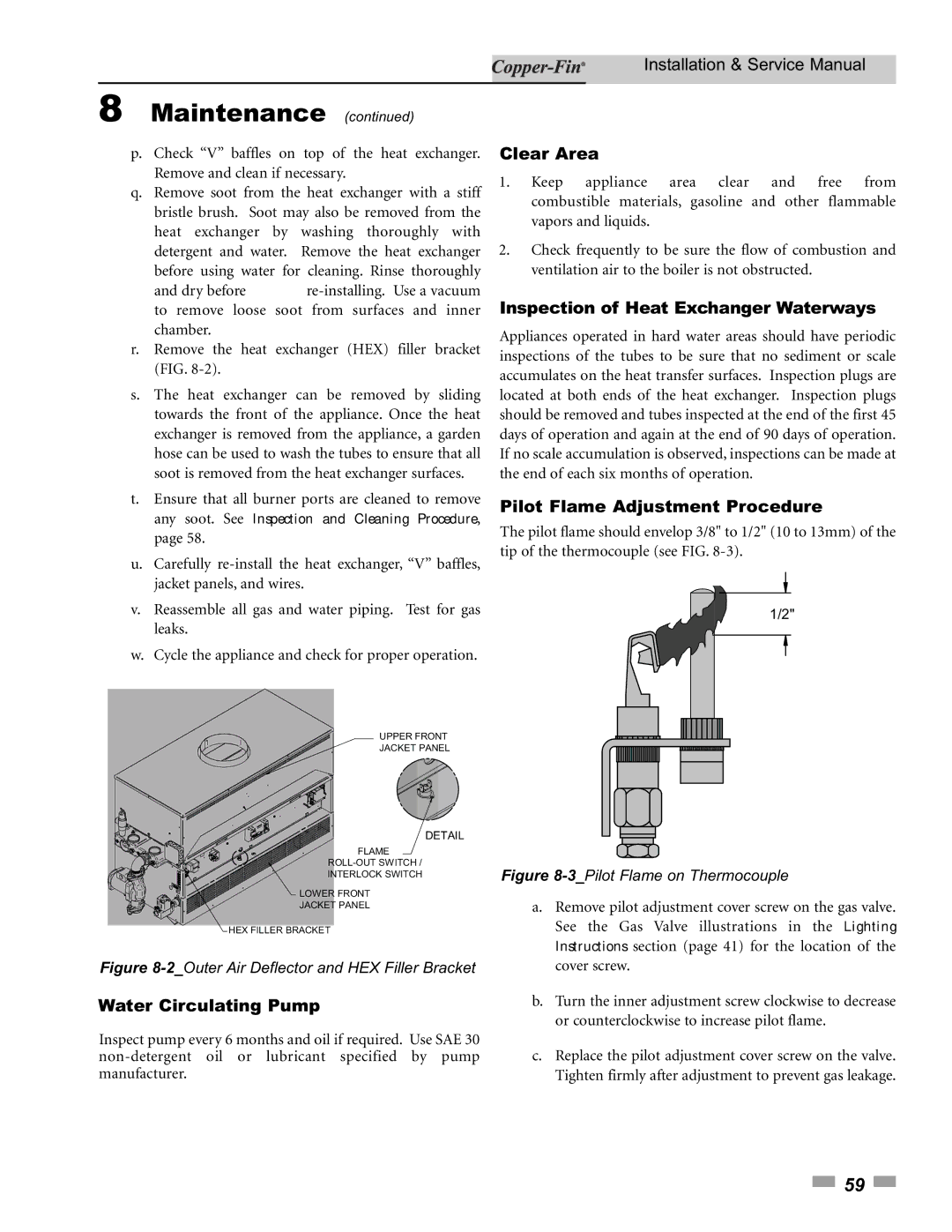
Installation & Service Manual
8 Maintenance (continued)
p.Check “V” baffles on top of the heat exchanger. Remove and clean if necessary.
q.Remove soot from the heat exchanger with a stiff bristle brush. Soot may also be removed from the heat exchanger by washing thoroughly with
detergent and water. Remove the heat exchanger before using water for cleaning. Rinse thoroughly
and dry before
r.Remove the heat exchanger (HEX) filler bracket (FIG.
s.The heat exchanger can be removed by sliding towards the front of the appliance. Once the heat exchanger is removed from the appliance, a garden hose can be used to wash the tubes to ensure that all soot is removed from the heat exchanger surfaces.
t.Ensure that all burner ports are cleaned to remove any soot. See Inspection and Cleaning Procedure, page 58.
u.Carefully
v.Reassemble all gas and water piping. Test for gas leaks.
w.Cycle the appliance and check for proper operation.
Clear Area
1. Keep appliance area clear and free from combustible materials, gasoline and other flammable vapors and liquids.
2.Check frequently to be sure the flow of combustion and ventilation air to the boiler is not obstructed.
Inspection of Heat Exchanger Waterways
Appliances operated in hard water areas should have periodic inspections of the tubes to be sure that no sediment or scale accumulates on the heat transfer surfaces. Inspection plugs are located at both ends of the heat exchanger. Inspection plugs should be removed and tubes inspected at the end of the first 45 days of operation and again at the end of 90 days of operation. If no scale accumulation is observed, inspections can be made at the end of each six months of operation.
Pilot Flame Adjustment Procedure
The pilot flame should envelop 3/8" to 1/2" (10 to 13mm) of the tip of the thermocouple (see FIG.
1/2"
UPPER FRONT
JACKET PANEL
DETAIL
FLAME
INTERLOCK SWITCH
LOWER FRONT
JACKET PANEL
HEX FILLER BRACKET
Figure 8-2_Outer Air Deflector and HEX Filler Bracket
Water Circulating Pump
Inspect pump every 6 months and oil if required. Use SAE 30
Figure 8-3_Pilot Flame on Thermocouple
a.Remove pilot adjustment cover screw on the gas valve. See the Gas Valve illustrations in the Lighting Instructions section (page 41) for the location of the cover screw.
b.Turn the inner adjustment screw clockwise to decrease or counterclockwise to increase pilot flame.
c.Replace the pilot adjustment cover screw on the valve. Tighten firmly after adjustment to prevent gas leakage.
![]() 59
59 ![]()
